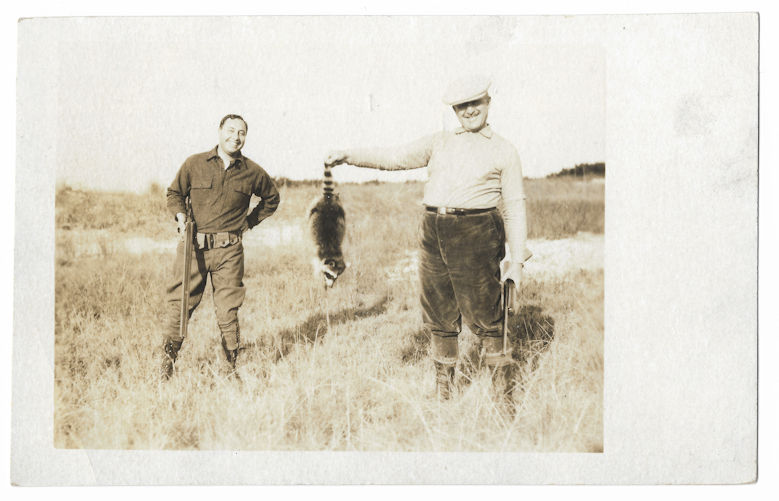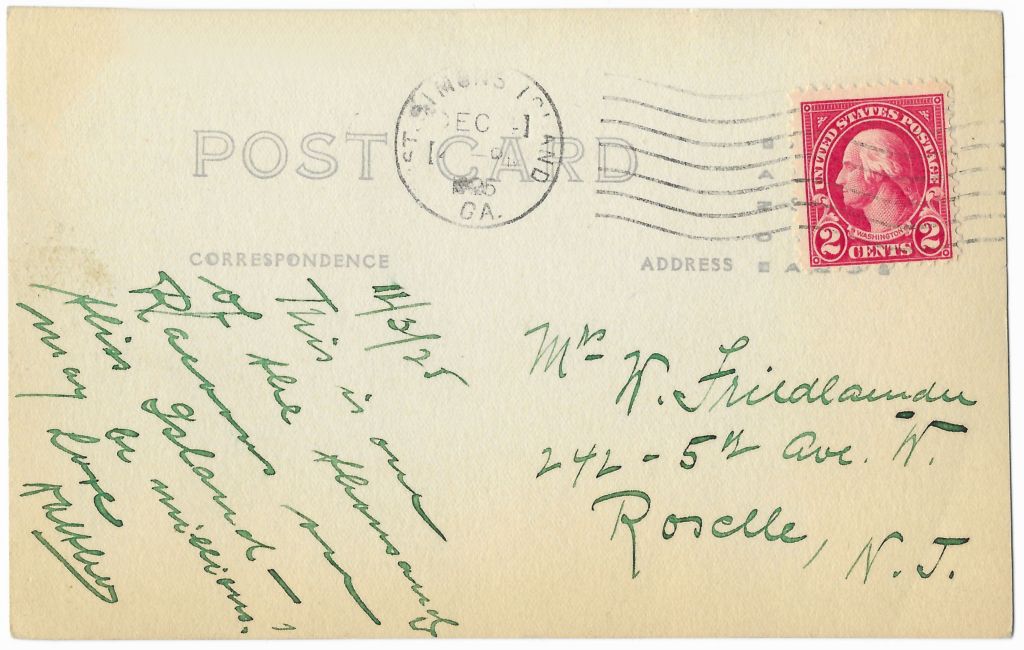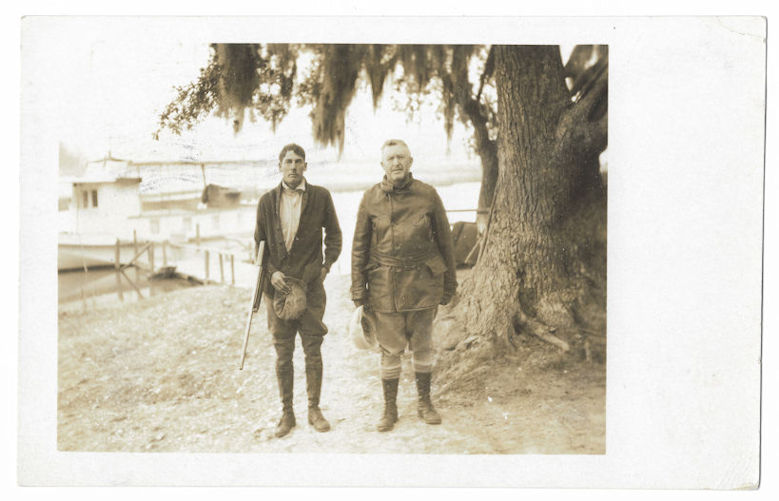



I was unable to reproduce the other cards in this series, but a buck and several hogs were among the other game taken on the trip.




I was unable to reproduce the other cards in this series, but a buck and several hogs were among the other game taken on the trip.
Filed under --GLYNN COUNTY GA--, St. Simons Island GA
The Liberty County Historical Society recently noted on its website that William McKinley Walthour’s Union Brotherhood Society meeting hall near Midway was in eminent danger of collapsing. While doing some re-shoots in coastal Liberty County yesterday, I drove by the site and can now report that it has indeed collapsed.
This relic of the Jim Crow era was a great example of the strong fraternal bonds of the African-American community, required at the time for the common benefits white society often took for granted, such as burial insurance. Its loss is most unfortunate.
The Historical Society made an impassioned plea for saving the structure, but its loss illustrates the limitations faced by such organizations. Donations are often slow to materialize and in an extraordinarily challenging year like 2020, even more so.
Filed under --LIBERTY COUNTY GA--
Thomas Landing, on the South Newport River, has been occupied since the early days of Colonial Georgia and its history is indelibly linked to the hundreds of African-Americans who resided here. They first landed here against their will but after Emancipation chose to remain, only to have their land taken from them by the United States government in the 1930s.
Harris Neck National Wildlife Refuge
Filed under --MCINTOSH COUNTY GA--, Harris Neck GA
This church was constructed between 1979-1983. Set in a beautiful grove of moss-draped oaks, its of a style typical among African-American congregations in Coastal Georgia. [“Carneghan” is likely the original spelling of the community, but it has been changed to “Carnigan” on modern maps.]
Filed under --MCINTOSH COUNTY GA--, Carnigan GA
Vernacular housing of the early 20th century, much of it related to the Gullah-Geechee community, is growing much rarer on the coast. Survivors are important links to the cultural history of the region, though I know of no effort to preserve them or their history.
Filed under --MCINTOSH COUNTY GA--, Carnigan GA
Manufactured kit houses, like this well-preserved side-gabled example, proliferated in McIntosh County (and much of America) from the 1930s to the 1960s. Such structures were improvements over earlier vernacular structures and afforded more convenience to homeowners than was previously available.
Filed under --MCINTOSH COUNTY GA--, Carnigan GA
Hidden on the edge of the road by thick woods today, these utilitarian hip-roof/pyramidal cottages are some of the last surviving examples of a vernacular style that was once widespread among the African-American communities of the coastal counties, as well as many areas of the state.
Because of their isolation, there is not a good way to photograph them other than showing them in their present state. They will eventually succumb to the ravages of time, but I think they are very important examples.
Filed under --MCINTOSH COUNTY GA--, Meridian GA